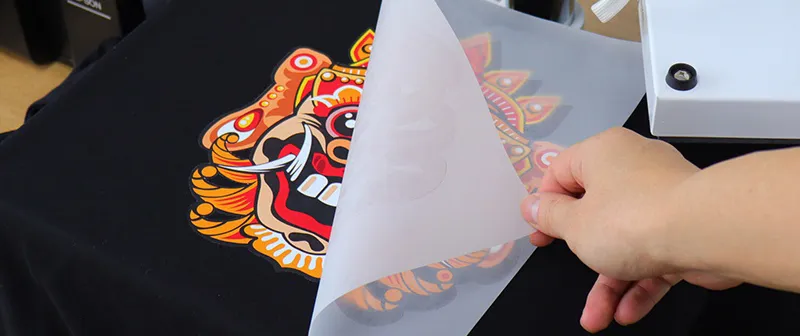Taking advantage of the Power of DTF Printing: Strategies for High-Quality Fabric Styles
Taking advantage of the Power of DTF Printing: Strategies for High-Quality Fabric Styles
Blog Article
Understanding DTF Printing: Advice for Achieving Vibrant and Long Lasting Prints
In the world of textile printing, attaining lively and long lasting prints is a desirable ability that can elevate the high quality of your output. From selecting the best materials to make improvements print settings and perfecting post-printing completing techniques, there are numerous factors that can influence the outcome of your prints.

DTF Printing Fundamentals
For those brand-new to the world of textile printing, recognizing the principles of DTF printing is important to understanding this cutting-edge method. Direct to Film (DTF) printing is a modern technique that includes transferring layouts from an unique film onto different textiles utilizing a heat press. Unlike typical approaches like display printing, DTF offers benefits such as dynamic colors, elaborate detailing, and the capacity to publish on diverse materials like cotton, polyester, and blends.
The process begins by printing the design on an unique DTF film utilizing a suitable printer with CMYK or CMYKW ink sets. As soon as the style is printed, it is then healed with a warm press to create a resilient and sturdy print. DTF printing is recognized for its capability to duplicate complex styles with high precision and color precision, making it a prominent selection for organizations seeking to create personalized apparel, promotional items, and extra.
Choosing the Right Products

Equally vital is the selection of the glue powder. The glue powder functions as a bonding agent in between the published layout and the textile, so it should have solid attachment residential or commercial properties to make certain a durable and long-lasting transfer. Different materials might call for different kinds of adhesive powders, so it is crucial to match the powder to the textile type for optimum results - DTF Printing. By carefully selecting the appropriate materials for DTF printing, printers can boost the top quality, vibrancy, and longevity of their prints.
Enhancing Print Settings
When aiming to accomplish the very best cause DTF printing, meticulous attention to optimizing print setups is crucial for ensuring precise and premium transfers onto fabrics. One essential element to consider when enhancing print settings is the resolution. Greater resolutions typically result in sharper and more in-depth prints, enhancing the general top quality of the transfer. Additionally, changing the ink thickness can aid guarantee and attain vibrant shades that the style sticks out on the fabric.
While increasing the rate can improve efficiency, it may endanger the last print's quality and color saturation. Experimenting with various speeds and observing the outcomes can assist determine the optimal setting for each print job.
In addition, fine-tuning shade accounts and making certain appropriate shade monitoring are important for accomplishing constant and exact shades throughout different prints. By adjusting shade setups and profiles, printers can minimize shade inconsistencies and create consistent outcomes, boosting the total print top quality and consumer complete satisfaction.
Preparing Art Work for DTF Printing
Convert the artwork to CMYK color setting to guarantee that the colors equate accurately from display to print. Remember to mirror the last layout before publishing to make certain that it transfers properly onto the garment. By following these steps and paying close focus to the details, you can prepare artwork that is optimized for vibrant and durable DTF prints.
Post-Printing Finishing Techniques
Carrying out efficient post-printing finishing methods is vital to boosting the sturdiness and aesthetic allure of DTF prints on fabrics. When the printing procedure is complete, using warmth to the published design is important (DTF Printing). Heat not only help in treating the ink but likewise guarantees that the colors are resilient and vibrant. A warmth press device set at the advised temperature address level and pressure settings can aid achieve ideal results.
After warm pushing, peeling off the pet dog film meticulously is a critical step. This process must be done slowly and gradually to stop any type of damages to the print. As soon as the film is removed, the print might require extra healing time to additionally establish the ink right into the material. This action assists improve the washability and durability of the print, guaranteeing it can stand up to several wash cycles without fading or cracking.
In addition, trimming any type of excess film around the layout can give the last print a tidy and expert appearance. Making the effort to appropriately end up DTF prints post-printing can substantially affect the total quality and long life of the fabric layout.

Verdict
To conclude, understanding DTF printing calls for a thorough understanding of the essentials, choosing suitable materials, optimizing print setups, preparing artwork successfully, and utilizing post-printing completing techniques. By complying with these techniques and suggestions, one can accomplish lively and resilient prints that satisfy their wanted quality standards. Constant technique and interest to information are essential in achieving successful results in DTF printing.
From picking the appropriate products to tweak print settings and improving post-printing finishing techniques, there are numerous aspects that can influence the end result of your prints. Unlike conventional approaches like screen printing, DTF supplies benefits such as vibrant colors, elaborate detailing, and the capability to publish on diverse products like cotton, polyester, basics and blends.
Once the design is published, it is then healed with a warmth press to produce a durable and long lasting print.When aiming to attain the best outcomes in DTF printing, thorough interest to optimizing print setups is essential for making sure top notch and precise transfers onto textiles.In verdict, mastering DTF printing requires a Click This Link thorough understanding of the fundamentals, choosing ideal materials, optimizing print setups, preparing artwork effectively, and making use of post-printing finishing techniques.
Report this page